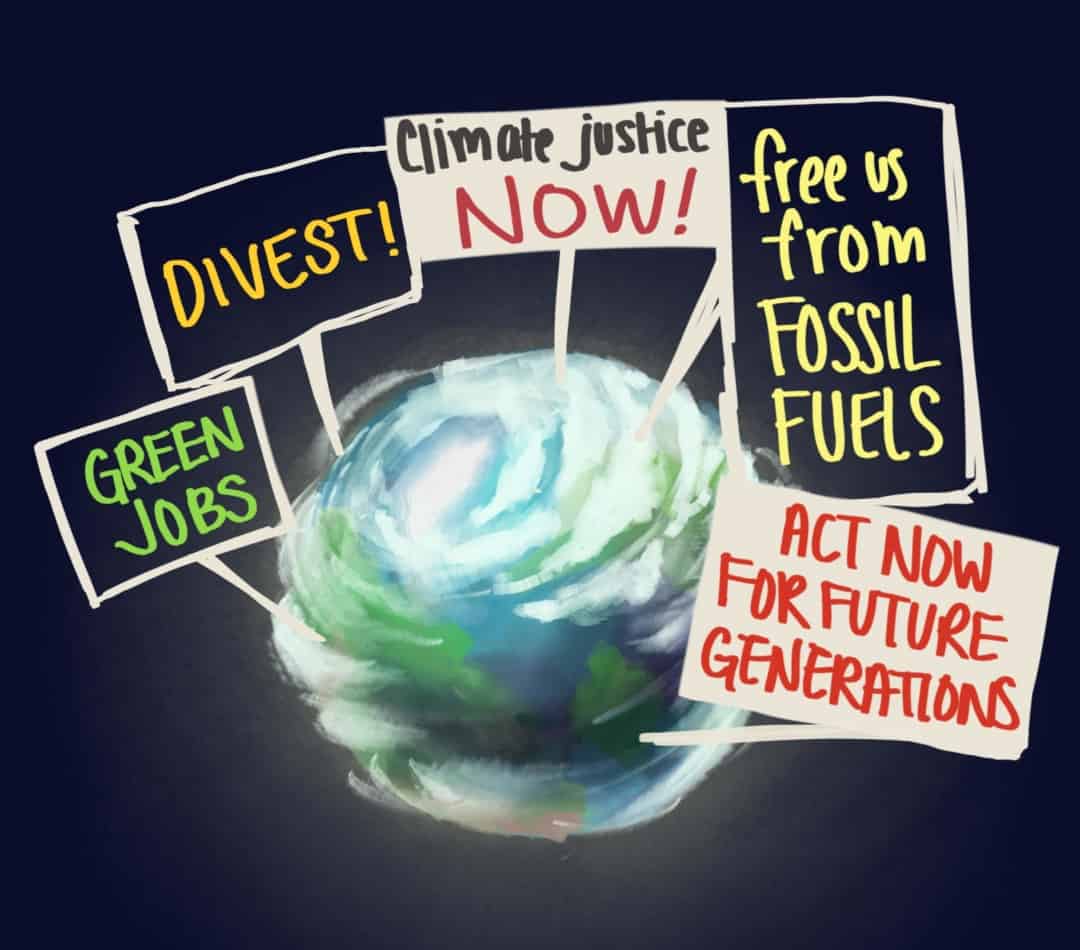On September 27, thousands gathered in Queen’s Park to take part in the Global Climate Strike to demand action on the climate crisis. The Fridays For Future movement, which originated from 16-year-old climate activist Greta Thunberg’s protest outside Sweden’s parliament, has now spread worldwide. Since the march in Toronto, Thunberg is still touring, having supported marches in Denver, Edmonton, and Vancouver in the past weeks.
Many of the protestors on the marches were teenagers who brought their youthful energy with them. The swathes of people marching were impressive, and many older people seemed encouraged by the youth turnout.
Yet when I attended the climate march in Toronto, I could not shake a feeling of disenchantment. In between the chants and speeches, the question of, “so what now?” lingered in my mind.
A protest is meant to invigorate and inspire, but it is not the be all, end all of a political movement. It can be a start, but much more tangible action is needed for these marches to have any significant meaning beyond performative action.
On September 23, Greta Thunberg made an impassioned speech at the United Nations, which has now gone viral. With tears in her eyes, she criticized world leaders, condemning their excuses, inaction, and “fairytales of economic growth.” Those very leaders whose actions she was condemning applauded and cheered throughout her speech with stunning obliviousness.
Thunberg met with Justin Trudeau four days later at the Montréal climate strike, and told him that he and other world leaders were not doing enough for the environment. Later that afternoon, Trudeau marched alongside the crowd of activists in Montréal, though the activists and marchers were protesting his government’s inaction on the crisis.
What was our prime minister protesting? His conscience?
After being re-elected, Trudeau reiterated his support for the Trans Mountain Pipeline, claiming that it falls in line with the Liberal party’s climate plan, and that the significant economic benefits will offset the environmental impacts and risks. Further, during his campaign he announced his party’s plan to plant two billion trees in Canada.
Unfortunately for Trudeau, building pipelines and planting trees will not save the climate. Drastic structural action is needed, one which has no place for pipelines. Apparently, Thunberg’s warnings of liberal economic fairytales did not reach the prime minister. There will be no economy for the government to worry about if we are all dead.
The marches were primarily made up of young people; inevitably, this meant that everyone was using social media. Signs referenced memes, people were taking snaps, and I was even asked to take a few Instagram pictures.
Admittedly, the performativity of social media can call into question people’s dedication to climate activism: protesting is cool, and environmentalism is sexy. Posting on social media does not indicate a challenge to the status quo, but instead, it presents an opportunity to gain online clout and receive a surge of serotonin from the flood of likes.
However, a protest can’t be completely discredited because people are posting about it on social media — so long as we don’t expect the Climate Strike to be the end of our climate activism in Canada.
Youth are always the future, and they turned out in droves — young people are animated and excited and want to see change. So long as that drive remains, stronger climate policy is coming.
Climate action requires radical policy changes and shifts in public life. Energy corporations like Canadian-based Suncor produce tens of billions of dollars of revenue a year, and by virtue of that they yield huge amounts of political power.
While individual choices to reduce consumption should be encouraged, changes are needed on a grander scale. It makes no sense to tell people to stop driving their cars to work when there is a lack of reliable public transportation. Public changes drive private choices.
Policies around the climate crisis are also inextricable from Indigenous land rights. While Greta Thunberg has found herself at the face of the movement, Indigenous activists have been saying the same thing for decades — that they were ignored, criminalized, and killed for their words and actions.
The climate marches are a good sign — there’s hope. But behind that hope there needs to be a powerful call to action through voting and civil disobedience, not just protests promoted by the institutions we criticize.


